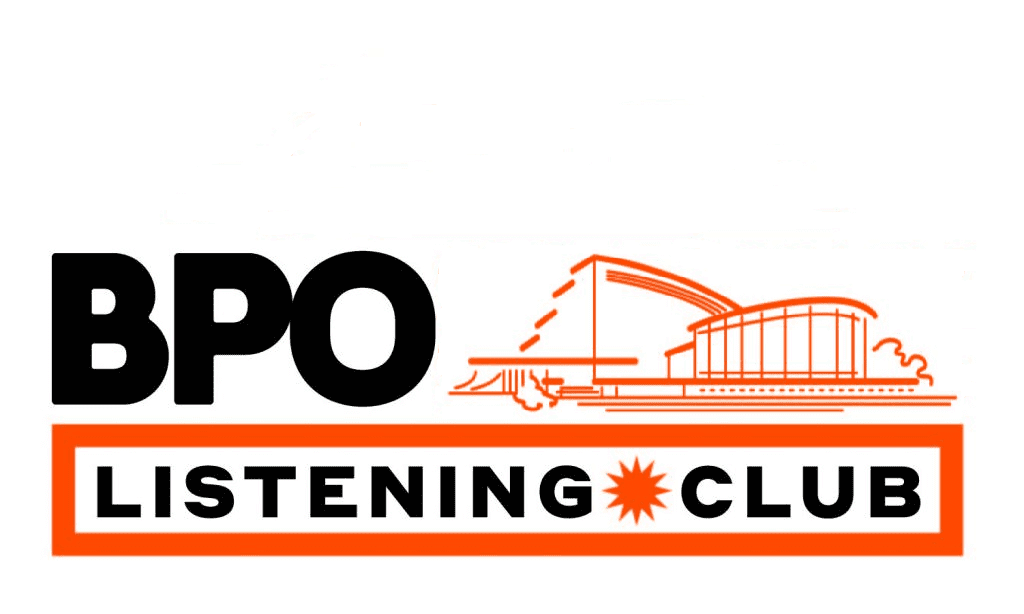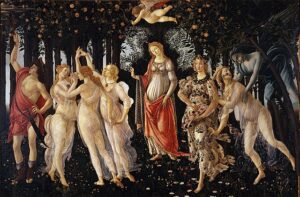
BARLOW The Winter’s Past
performed by students at the Cleveland Institute of Music
BERNSTEIN Serenade
performed by the London Symphony Orchestra with Leonard Bernstein conducting!
RESPIGHI Botticelli Triptych (Trittico Botticelliano)
performed by the WDR Symphony Orchestra
“Good artists copy, great artists steal” – Steve Jobs, who probably stole that from someone else
Ok maybe not steal, but heavily borrow. (some more than others)
Artists are constantly riffing off of each other, helplessly influenced by the artwork of their predecessors and peers. Innovation isn’t really pulling new ideas out of thin air, but instead is the combination and morphing of old ideas into something new. I’m not suggesting that artists are all scams, doing nothing but copying one another – actually, when you think about it, it couldn’t be any other way. Humans don’t live in isolation. We’re social creatures, constantly sharing ideas, artwork among them. That you could grow to be an artist and never have encountered another piece of artwork that would poison your uninfluenced mind would be ridiculous.
It’s a natural progression: any artist has an ample supply of inspiration at their disposal just from the body of work that has been created before them. They learn from each other, not only within their own lives but over generations, sometimes even thousands of years.
So, yeah, you guessed it, here’s the time where I’m like “omg can you believe it, classical music does this too! See, we’re cool! See!?” With that out of the way, I don’t have to write the rest of this paragraph. +1 for efficiency.
This week’s program features two pieces absolutely tethered to the Classical era. “But it’s called ‘20th Century Titans’, you sure you have the right program?” Yes I’m sure, and no I didn’t check five times this week. What’s confusing you (and understandably so, I have to admit) is the word Classical, something that we associate with… well what? All music you’d ever see an orchestra play? The era of music in which Haydn, Mozart, and Beethoven lived? Or perhaps the Classics as in the ancient Greek literature?
Well, all of the above really. But when I said that these two pieces were tethered to the Classical era, I was really referring to the last one: ancient Greek society. The OG classics. Like when people in the 18th century said “respect the classics” they were talking about the people of Athens, my boy Socrates and his crew, Homer and his epics.
The literature and artwork produced in this time has been the source of inspiration for countless artists, Bernstein and Respighi among them. I personally think it’s really cool that music by these composers who lived in the 20th century was inspired by art produced literally thousands of years prior. Cooler still is that there are examples of this kind of inspiration several layers thick – like the “neoclassical” movement of the early 20th century imitating the “classical” composers of the late 18th century, who themselves were heavily inspired by the Greek classics. It’s like a remix of a remix.
So anyway, let’s look at some of this inspirational artwork, shall we?
The Respighi is inspired by three of the most famous paintings by Sandro Botticelli, a prolific Italian artist from the late 1400’s (click to enlarge images):
Of the three paintings, the first and last depict mythological scenes (Primavera and The Birth of Venus, respectively) while the second painting is a biblical subject (Adoration of the Magi). If you saw our classical christmas show, you’ll already know that piece of music – I wrote about its interesting orchestration in Listening Guide #6.
There’s a lot that can be said about these three paintings – their fame and influence is immense, to be sure. However, I’m not able to give an in-depth artistic analysis here, nor do I think that’s what you’d want to read. Instead, I simply suggest that you have these images ready to view while you listen to the music. For me, drawing the connection between art as old as this and music as new as Respighi is the feature of this program. What new ways of understanding this art does Respighi offer us?
The same question could be asked of the Bernstein Serenade. It is inspired by Plato’s Symposium, a collection of dialogues by notable Athenian philosophers on the subject of love, or more specifically, Eros, the god of love. That’s about as far as I’m willing to go in describing the text, because getting deeper into it could extend the length of this document by quite a lot. So, you’re welcome.
Again, to me, what’s fascinating about this music is that you’re hearing Bernstein’s take, in his own unique musical language, on a thousands of years old document. It’s a thin thread that connects them, but significant. The style of music that Bernstein writes in has very little to do with the ancient Greeks, but the common subject exists. You can go read the original Plato if you wish, but what I recommend is that you have this imagery in your mind while listening – with it, you’ll be able to hear the connection and ponder these subjects from a new perspective.
Discussion Questions:
- Has one work of art (movie, song, painting, anything really) inspired you to create another work of art? Share your experience, and the resulting artwork if you are able!
- Revisiting a previous work of art is nothing new. The pieces on this program are “modern takes” inspired by old artwork, but sometimes you see a full remake of something old, updating it to today’s standards. An example of this would be the Final Fantasy 7 Remake, a game released last year which was a straight up remake of a famous game from 1997. You see this in film as well, with remakes of old standards like Willy Wonka and the Chocolate Factory. Can you think of another example of this, and do you feel like literal remakes of these sort are valuable? In your example, comment on how you think a remake changes your understanding of the original artwork.


